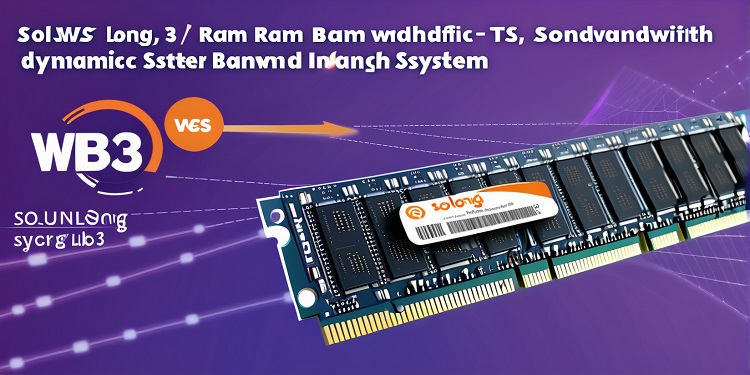As the boundaries between decentralized physical infrastructure networks (DePIN) and artificial intelligence (AI) continue to blur, the Web3 ecosystem is witnessing a notable transformation. The space is gradually evolving from the earlier model of merely recording assets on-chain to more advanced functions such as resource tokenization and intelligent orchestration. Riding this wave of innovation, SOLLONG, a significant player in the DePIN landscape, has announced a major development with the introduction of its latest offering—the RAM Virtual Bandwidth System.
This new initiative signifies a pivotal evolution in SOLLONG’s journey. Until now, the platform had primarily focused on providing compute resources in a decentralized environment. With the integration of the RAM module, SOLLONG is expanding into data flow infrastructure. This addition aims to enable more dynamic and real-time engagement across the network, allowing for responsive and intelligent routing of data streams.
From Compute to Connectivity: A Broader Vision
SOLLONG’s path over the past two years has centered on constructing a distributed compute framework, supported by its dual-engine approach that merges cloud computing capabilities with the principles of DePIN. This structure has already provided a measurable and participatory ecosystem for decentralized compute operations. The latest development adds another layer of functionality—prioritized bandwidth access.
The RAM system does not follow the traditional format of bandwidth allocation. Rather than offering simple data transmission limits, it introduces on-chain representation of bandwidth rights and prioritization levels. Drawing conceptual inspiration from tiered pricing models seen in Web2 services and merging them with the modular nature of Web3 infrastructure, SOLLONG has developed RAM as a programmable and strategy-oriented bandwidth unit. This mechanism aims to increase synergy between users, data flows, and the network’s core service architecture.
AI Integration and Real-Time Responsiveness
One of the standout features of the RAM module is its compatibility with AI-driven operations. The system has been built to do more than simply allocate bandwidth. It functions as a responsive, data-centric engine that enables real-time interaction within the network. This architecture supports intelligent resource distribution and adaptation, making it well-suited to support the ever-growing demand for performance and efficiency in AI applications.
The RAM system’s underlying logic is geared toward transforming bandwidth into a strategic asset. It aims to offer participants not only access to network resources but also the ability to customize and optimize how those resources are utilized based on specific operational requirements.
Toward an Intelligent, Tokenized Future
With the rollout of the RAM Virtual Bandwidth System, SOLLONG appears to be setting the stage for a more versatile and intelligent Web3 infrastructure. The move from compute-centric design to one that encompasses intelligent bandwidth allocation underscores a broader vision—one where decentralized networks can support both massive computational tasks and complex, data-driven workflows.
This development reflects a broader trend in the Web3 world, where infrastructure is no longer confined to static utility but is becoming increasingly dynamic and responsive. SOLLONG’s latest step suggests that the future of decentralized networks will not only be measured by compute power but also by the agility and intelligence with which resources are orchestrated and deployed.









